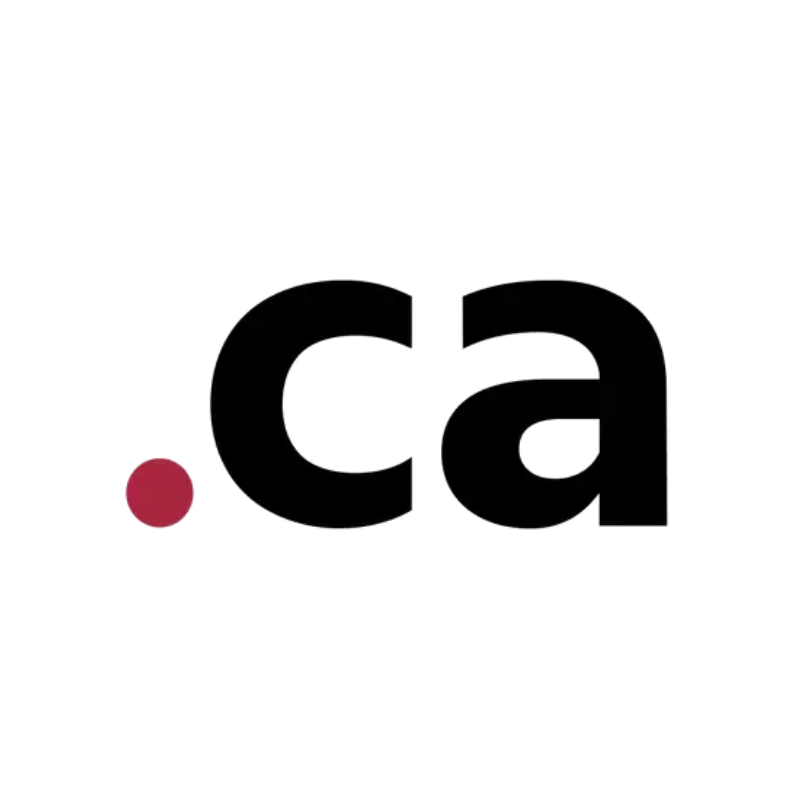Last updated on June 8th, 2024 at 07:39 pm
Before you label any product in Canada, it’s important to know the rules and how to comply with Canadian labeling regulations.
Let’s take a step back.
You have crafted your product or purchased and it’s time for packaging and branding.
This is where labels come into play.
Now, in Canada, there are rules about what you have to put on product labels.
These rules are there to keep consumers safe and informed.
Not following the rules can get you in trouble. You might have to pay fines or deal with legal problems.
Henceforth, make sure your labels have all the required information.
Use the right language and follow any specific rules for your industry.

However, even though you have to follow the rules, you can still make your labels reflect your brand.
We’ll give you some tips on how to do that.
Whether your business is big or small, following these rules is important if you want to succeed in Canada.
With our guidance, you can confidently comply with Canadian product labeling regulations and make sure your products are ready for customers in Canada.
The Canadian Product Labeling Regulations
Let’s dive into how product labeling works in Canada.
It’s not as complicated as it sounds, but there are a few important rules to know.
Who’s in Charge of Product Labeling in Canada?
In Canada, three main agencies handle product labeling:
1. Competition Bureau, Industry Canada: Makes sure non-food products follow the Consumer Packaging and Labeling Act.
2. Canadian Food Inspection Agency (CFIA): Takes care of food product labeling.
3. Health Canada: Looks after labels for drugs, cosmetics, and health products.
Key Laws and Regulations
Here are the main rules for labeling products in Canada:
Consumer Packaging and Labeling Act: Requires prepackaged goods to have labels in both English and French, showing the product name, net quantity, and the seller’s information.
Food and Drugs Act: Covers labeling for food, drugs, cosmetics, and devices, including nutrition facts, allergen info, and health claims.
Consumer Chemicals and Containers Regulations (CCCR 2001): Sets rules for labeling hazardous chemicals and containers.
Why Follow These Regulations?
Following these labeling rules is important because:
1. It keeps consumers safe by providing accurate information about what’s in the product and any potential hazards.
2. It helps people make informed choices and compare different products.
3. It prevents false or misleading claims, ensuring fair competition.
4. Not following the rules can lead to fines, product recalls, and legal trouble.
So, that’s a quick look at product labeling in Canada. It’s all about making sure labels are clear, accurate, and helpful for everyone.
Mandatory Labeling Requirements
These are the mandatory labeling elements for all products sold in Canada.

All prepackaged products sold in Canada must include the following mandatory labeling elements:
1. Product name
2. Net quantity
3. Dealer’s name and principal place of business
4. Country of origin (if the product is imported)
Additional mandatory elements for food products include:
1. Ingredient list
2. Nutrition facts table
3. Allergen declaration
4. Durable life date (best before date)
For cosmetic products, the mandatory elements are:
1. Product name
2. Net quantity
3. Dealer’s name and address
4. List of ingredients
5. Warnings and cautions
Detailed requirements for mandatory labeling elements
Product Name: The common or generic name of the product must be displayed.
Net Quantity: The quantity of the product must be stated in metric units (e.g. grams, milliliters) on the principal display panel.
Specific requirements exist for the font size based on the size of the package.
Dealer’s Information: The name and principal place of business of the manufacturer, packer, distributor, importer, exporter, or seller must be provided.
Country of Origin: If the product is imported, the country of origin must be declared.
Ingredient List: For food and cosmetic products, the ingredients must be listed in descending order of proportion.
Allergens and food colors must be declared.
Nutrition Facts Table: Food labels must include a standardized nutrition facts table with information on calories, fats, carbohydrates, proteins, vitamins, and minerals per serving.
Durable Life Date: Foods with a durable life of 90 days or less must have a “best before” date on the label.
Additional requirements for specific product categories
Food Products:
Bilingual labeling in English and French is mandatory.
Specific requirements exist for nutrition claims, health claims, and nutrient content claims.
Cosmetic Products:
Warnings and cautions must be prominently displayed.
Certain ingredients like preservatives and sunscreens have specific labeling requirements.
Textile Products:
Fiber content and dealer identity must be labeled.
Bilingual labeling is required for products sold in Quebec.
Optional Labeling Elements
Optional labeling elements are additional pieces of information that businesses can include on their product labels to make them more appealing or transparent to consumers.

These elements are not required by law but can provide extra value.
Some common optional labeling elements include:
Country of Origin: This isn’t required for all products, but it can be useful. If your product has a strong national identity or you want to attract customers who prefer local goods, adding the country of origin can help.
Environmental Claims: Labels like “biodegradable” or “recyclable” can attract eco-friendly consumers.
Certifications: Third-party certifications such as “organic” or “fair trade” give consumers extra confidence in your product’s quality or production process.
Nutrition and Health Claims: You can highlight benefits like “low fat” or “high in fiber” if they meet regulatory standards.
Special Dietary Information: Labels like “gluten-free” or “vegan” can help consumers with specific dietary needs.
Benefits of Including Optional Labeling Elements
1. Enhanced Product Appeal: These labels can make your product stand out and attract consumers with specific interests or values.
2. Increased Transparency: Providing extra details about your product’s origin, environmental impact, or nutritional content builds trust with your customers.
3. Targeted Marketing: These labels can help you target specific consumer groups, like those who are eco-conscious or focused on health.
How to Responsibly Include Optional Labeling Elements
To ensure you don’t mislead consumers, follow these guidelines:
1. Ensure Accuracy and Truthfulness: All information on your label should be accurate and honest.
2. Comply with Regulatory Requirements: Make sure your optional labels meet relevant regulations, especially for environmental and health claims.
3. Avoid Ambiguity and Confusion: Labels should be clear and straightforward to prevent misunderstandings.
4. Support Claims with Evidence: Be ready to back up your claims with proof, such as scientific studies or third-party certifications.
5. Be Transparent About Certifications: If your product has a certification, clearly indicate the certifying organization and the standards met.
Labeling Compliance Strategies
Making sure your product labels follow all the rules is really important for businesses.
This means you need to keep up with any changes in regulations and understand what your customers want.
First, you need to stay updated on changes from organizations like the FDA and USDA, along with other local and international regulations.
Consumer preferences can also shift, so keeping an eye on trends is important.
If your labels don’t comply or are misleading, it can lead to big problems.
You might have to recall your products, face lawsuits, or even harm your brand’s reputation.

Ensuring compliance during product development and manufacturing
To ensure compliance with labeling regulations during product development and manufacturing, businesses should:
Automate for compliance: Implement product lifecycle management (PLM) software with built-in regulatory content and design features to automatically apply the latest rules and exemptions.
Consolidate label data: Centralize formulas, ingredient statements, nutritional claims, and label designs to ensure consistency across all products and SKUs.
Support traceability: Integrate PLM and ERP systems to provide information on the source of every ingredient in every batch, building trust among consumers and facilitating prompt recalls when necessary.
Connect all contributors: Use PLM systems with integrated collaboration to involve all stakeholders, including co-packers, regulatory affairs managers, product developers, and suppliers, in the labeling process.
Conducting label reviews and audits
To identify and correct non-compliant labeling practices, businesses should:
Regularly review labels: Conduct internal audits to catch discrepancies before they escalate.
Use data analytics: Leverage data-driven labeling to inform labeling decisions and reduce errors.
Train employees: Provide comprehensive training programs to ensure all employees understand the critical role of labeling in compliance.
Foster a culture of compliance: Make compliance a part of the corporate culture to encourage labeling excellence.
Consequences of Not Following the Rules
Not following Canadian product labeling rules can cause big problems for businesses.
Here’s what can happen:
1. Fines: You might have to pay a lot of money, from $10,000 to $10 million.
2. Product Recalls: You could be forced to take products off the shelves, which can cost a lot and hurt your brand.
3. Legal Action: You could face lawsuits or even criminal charges.
4. Reputational Damage: Being non-compliant can ruin your reputation and make customers lose trust.
How to Stay Compliant
To avoid these problems, businesses should:
1. Stay Informed: Keep up with the latest labeling regulations.
2. Implement Compliance Programs: Set up policies and procedures tailored to your needs.
3. Train Employees: Make sure your team understands the importance of labeling compliance.
4. Review and Audit: Regularly check labels and practices to catch and fix issues.
5. Promote a Compliance Culture: Encourage everyone in the organization to prioritize compliance.
Resources to Learn How to Comply with Canadian Product Labeling Regulations
Need help with Canadian product labeling regulations?
Here are some resources:
Government Websites
Health Canada: Info on cosmetic and consumer product labeling.
Competition Bureau Canada: Guidance on labeling under the Consumer Packaging and Labelling Act.
Industry Associations
CCTFA: Guidance on cosmetic labeling.
CFIB: Resources for small businesses on labeling compliance.
Consulting Services
QIMA: Quality control and labeling guidance.
Consulting Firms: Specialized advice on regulations.
Using These Resources
Government Websites: Check Health Canada and Competition Bureau Canada for official guidelines.
Industry Associations: Join CCTFA and CFIB for insights, networking, and resources.
Consulting Services: Use QIMA and other firms for expert guidance, audits, and strategy.
Why Professional Help Matters
Regulations can be complex.
Professional help ensures compliance and avoids penalties, offering tailored advice and ongoing support.
Conclusion
In this article, we’ve taken a close look at the ins and outs of Canadian product labeling regulations and how to comply.
Following these rules is important for consumer safety, fair trade, and legality.
Also, sticking to these rules not only ensures that product information is clear and accurate but also builds trust and loyalty among consumers.
So, it’s really important to focus on compliance and use the resources available to navigate these regulations effectively, protecting your brand and your customers.
Read also:
 cPanel Web HostingAffordable Canadian cPanel hosting, user-friendly and reliable.
cPanel Web HostingAffordable Canadian cPanel hosting, user-friendly and reliable. Reseller HostingStart your own hosting business with flexible reseller hosting plans.
Reseller HostingStart your own hosting business with flexible reseller hosting plans. Affiliate ProgramJoin our affiliate program and earn commissions by referring customers.
Affiliate ProgramJoin our affiliate program and earn commissions by referring customers. DomainsFind the perfect domain for your business or personal site with ease.
DomainsFind the perfect domain for your business or personal site with ease. Domain TransferTransfer your domain to us and keep your website running without interruption.
Domain TransferTransfer your domain to us and keep your website running without interruption. WHOIS LookupQuickly find who owns a domain with our easy WHOIS search tool.
WHOIS LookupQuickly find who owns a domain with our easy WHOIS search tool. VPS HostingReliable VPS hosting crafted for performance and peace of mind.
VPS HostingReliable VPS hosting crafted for performance and peace of mind.
